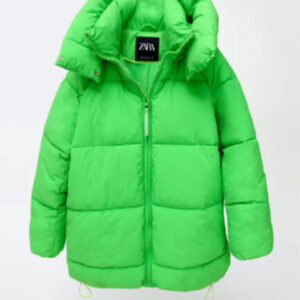Introduction
Puffer jackets have become a staple in everyone’s winter wardrobe. They are not only known for their ability to keep you warm and cozy but also for their stylish and trendy designs. In this article, we will explore the world of puffer jackets, their history, different styles, materials used, and how to choose the perfect one for your needs. Whether you’re an outdoor enthusiast or a fashion-conscious individual, this guide will provide you with all the information you need to know about puffer jackets.
The Evolution of Puffer Jackets
Puffer jackets, also known as quilted jackets, have a rich history that dates back to the early 20th century. They were originally developed for explorers and mountaineers who needed insulation in extremely cold conditions. The design of puffer jackets involves creating small pockets of insulation by stitching thenfjacketshop the outer fabric to the inner lining, thus trapping warm air and providing excellent insulation.
Types of Puffer Jackets
Down-Filled Puffer Jackets
Down-filled puffer jackets are the most popular and widely recognized type. They are filled with natural down feathers, usually from ducks or geese. Down insulation offers an exceptional warmth-to-weight ratio, making these jackets perfectpuffer lightweight and highly efficient in trapping heat. They are also known for their superior breathability, allowing moisture to escape, which helps regulate body temperature.
Synthetic-Filled Puffer Jackets
Synthetic-filled puffer jackets, as the name suggests, are filled with synthetic materials such as polyester fibers. These jackets are a great alternative to down-filled jackets, especially for individuals with allergies or ethical concerns regarding animal products. Synthetic insulation provides good warmth even when wet and dries quickly, making it suitable for damp or rainy conditions.
Materials Used in Puffer Jackets
Down Insulation
Down insulation is sourced from the soft and fluffy underlayer of feathers found on ducks or geese. It provides excellent insulation by trapping air and retaining body heat. The quality of the down is measured by its fill power, which indicates how much space one ounce of down occupies. Higher fill power results in better insulation and lightweight jackets.
Synthetic Insulation
Synthetic insulation, such as polyester fibers, is designed to mimic the properties of natural down. It is often used as an alternative to down due to its affordability and hypoallergenic properties. Synthetic-filled jackets are more resistant to moisture and offer insulation even when wet. They are also easier to care for and are a popular choice for outdoor activities.
Outer Shell Fabrics
The outer shell fabric of a puffer jacket plays a crucial role in providing durability, water resistance, and windproofing. Common materials used include nylon, polyester, and ripstop fabrics. Nylon is lightweight and offers excellent water resistance, while polyester is known for its durability. Ripstop fabrics have reinforced weaves that prevent tears and enhance the jacket’s overall strength.
Choosing the Right Puffer Jacket
When selecting a puffer jacket, there are several factors to consider:
Consider the Climate
Think about the climate and intended use of the jacket. If you live in extremely cold regions, a higher-fill power-down jacket would provide optimal warmth. For milder climates, a lower fill power or synthetic-filled jacket may be sufficient.
Determine the Insulation Type
Decide whether you prefer natural down or synthetic insulation. Consider your personal preferences, ethical considerations, and the jacket’s performance in different weather conditions.
Evaluate the Jacket’s Weight and Packability
If you plan to travel or engage in outdoor activities where space is limited, choose a lightweight and packable jacket. Down-filled jackets tend to compress more and take up less space compared to synthetic-filled jackets.
Assess the Jacket’s Fit and Style
Ensure the jacket fits well and allows for easy movement. Look for adjustable features like cuffs, hoods, and hemlines that help seal in warmth. Consider the jacket’s style and choose a design that suits your personal taste and fashion preferences.
Caring for Your Puffer Jacket
To ensure the longevity and performance of your puffer jacket, follow these care instructions:
Washing and Drying
Check the jacket’s care label for specific instructions. In most cases, machine washing on a gentle cycle with mild detergent is recommended. Avoid using fabric softeners or bleach. Tumble dry the jacket on low heat with a few clean tennis balls or dryer balls to help fluff the down or synthetic insulation.
Proper Storage
When not in use, store your puffer jacket in a dry and well-ventilated area. Avoid compressing it for long periods, as this can affect its loft and insulation properties. Use a breathable garment bag or hang it on a sturdy hanger to maintain its shape.
Conclusion
Puffer jackets are a combination of functionality and style, providing warmth and comfort in cold weather while allowing you to express your fashion sense. With various types, insulation options, and design choices available, finding the perfect puffer jacket for your needs is easier than ever. Remember to consider the climate, insulation type, and fit when making your selection. By following proper care instructions, your puffer jacket will remain in excellent condition for years to come. Stay warm, stay stylish, and enjoy the winter season with your perfect puffer jacket!


